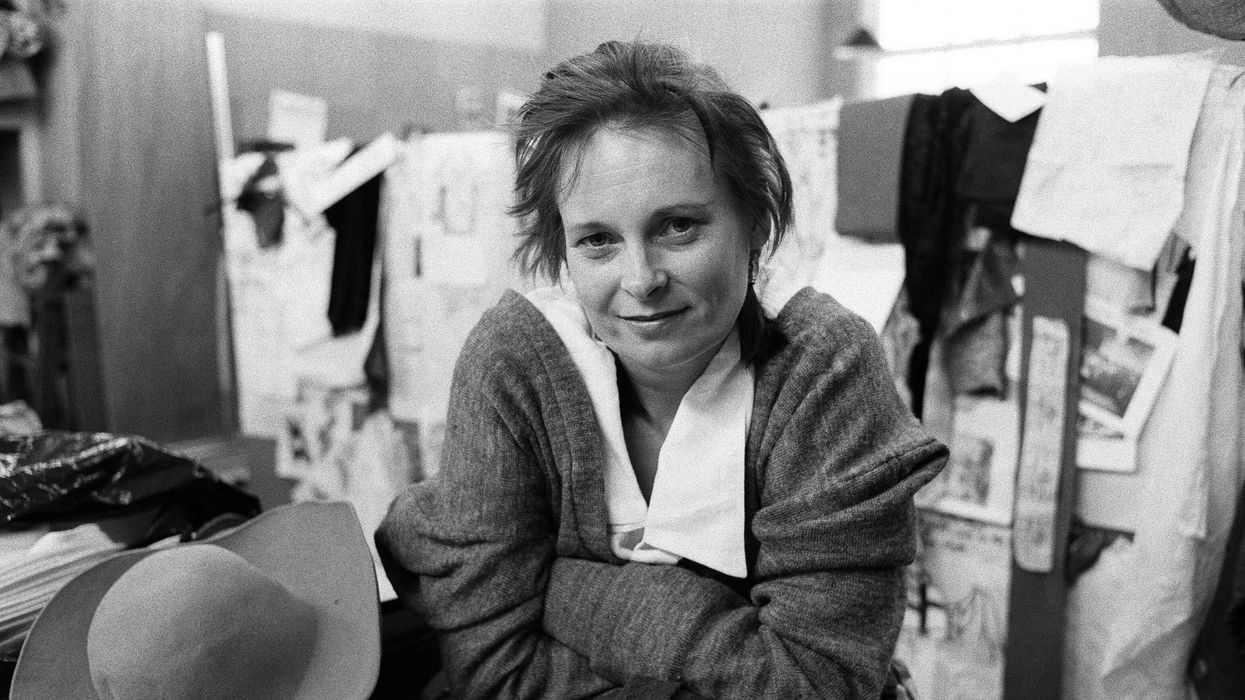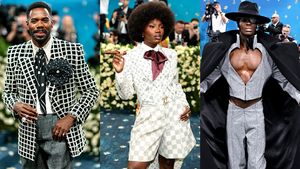(CNN) — With some help from the Sex Pistols, British youths hungry for anarchy, and influences including Teddy Boy subculture and fetishists, Vivienne Westwood helped develop punk as a style, an ethos and a movement.
The British designer, who died this week at 81, became one of the UK's most revered style icons. But before she dressed supermodels and constructed romantic corsets, she ripped up fashion's rule book for a new generation of disillusioned changemakers.
The punk style for which Westwood became known in the 1970s was born out of her relationship with Malcolm McLaren, her partner at the time. Westwood said years later that she didn't want to be a designer but made clothes out of necessity in her teens and when she was asked by McLaren to outfit the new band he was managing, the Sex Pistols.
Their relationship was fraught -- Westwood would later accuse McLaren of abuse -- but ultimately forged one of the most influential (and shortest-lived) bands in music and an oft-imitated style.
The Sex Pistols' history is intertwined with Westwood's King's Road boutique, then called SEX. It sold Westwood's handmade festish clothing and employed burgeoning fashion iconoclasts like Jordan and musicians like Chrissie Hynde of The Pretenders. It's where Pistols guitarist Steve Jones and friends hung out and where the band auditioned a green-haired outcast named John Lydon, better known to many as Johnny Rotten, as its lead singer.
Westwood and McLaren's views influenced what the Pistols wrote, and Westwood designed clothes that mirrored the band's anarchist sensibilities. When the Sex Pistols' single "God Save the Queen" was banned from British radio, Westwood renamed her shop Seditionaries and outfitted the band in her provocative designs, which included a distressed muslin top emblazoned with Queen Elizabeth II's portrait and the infamous "Destroy" T-shirt that featured a swastika and an upside down crucified Jesus.
Westwood's clothes during this era were intentionally challenging and abrasive, made to comment on conservative ideals and a lack of social progress. She was influenced by leather-clad bikers and pinup girls of the 1950s, the bondage-heavy S&M subculture with its hardware and a DIY ingenuity -- safety pins, zippers, haphazard hems -- coupled with traditional fabrics like tartan.
Westwood wanted to provoke young punks into political action, she said, and she believed her clothes represented her own radical views during the '70s. Her designs were meant to "confront the status quo," she said, and encourage others to do the same. By dressing like a punk, she said, "basically you are insulting yourself, but you're also clearing yourself of all egotism."
But when the mainstream got its hands on Westwood's punk designs, many of them were uninterested in punk's radical political underpinnings. The Sex Pistols fell apart before the decade was up and Sid Vicious, released on bail after being accused of killing girlfriend Nancy Spungen, died of an overdose at 21 -- punk had lost its gritty luster.
Westwood took a more jaded view of the style she helped birth in a 2011 interview with the Guardian: "The punk movement ... it was just a fashion that became a marketing opportunity for people," she said.
Westwood traded punk for high fashion
Disenchanted, Westwood built her eponymous line and split from McLaren. Her new style inspiration was history, with corsets and voluminous skirts inspired by the 18th century and poking fun at the bourgeoisie.
Westwood went on to become one of the UK's most celebrated designers, beloved by the mainstream industry she once wanted to repel. Westwood, who once used the Queen's visage as a symbol of societal decay, called the monarch an "asset" to British society in a 2013 interview with CBS Sunday Morning and was named Dame Commander of the British Empire. Her line's emblem is even an orb, inspired by the Sovereign Orb of UK's Crown Jewels.
But as she aged, she became a dedicated activist beyond fashion, although she continued to use her line as a platform for her views. In 1989, she famously impersonated Margaret Thatcher, who opposed social welfare programs, on a magazine cover. She long advocated against consumerism and urged fans of her clothes to buy less of them and invest in long-lasting pieces. She removed fur from her line and produced vegan handbags.
Contemporary designers are still inspired by the punk scene Westwood helped shape, drawing on the "distressed" look and incorporating tartan and safety pins. And many of today's punks -- on top of following a specific aesthetic -- have taken up the causes Westwood wanted to acknowledge in her work, including anti-authoritarianism, anti-racism and support of LGBTQ people.
But when it comes to style mavens who sample punk looks without engaging with the movement that birthed it, Westwood wasn't convinced they were true punks at all.
"It's entered into the iconography of 'I am a rebel and that's what I look like if I want to be that kind of rebel," she told the Guardian. "But for somebody my age to think that it's got any credibility in any way -- no it hasn't."
The-CNN-Wire
™ & © 2023 Cable News Network, Inc., a Warner Bros. Discovery Company. All rights reserved.


















































